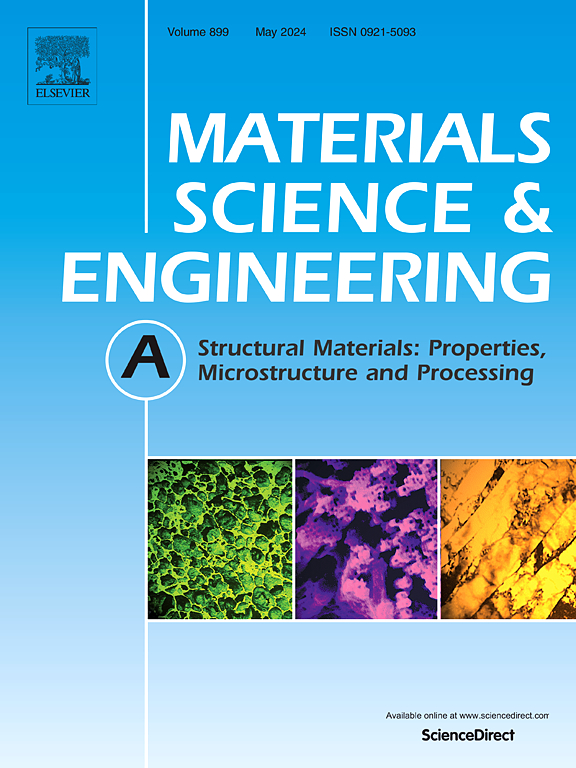Friction surface layer deposition of triple-phase Al10Cr12Fe35Mn23Ni20 high entropy alloy: Process optimization and microstructural evolution
IF 6.1
2区 材料科学
Q1 MATERIALS SCIENCE, MULTIDISCIPLINARY
引用次数: 0
Abstract
A high-strength Co-free triple-phase Al10Cr12Fe35Mn23Ni20 high-entropy alloy (HEA) was successfully fabricated using Friction Surface Layer Deposition (FSLD), a bulk manufacturing method. Multiple single-layer deposits were produced by varying forging force (F) and traverse speeds (Tr) to optimize the process parameters. The optimized conditions (F = 40 kN & Tr = 200 mm/min) were then applied to manufacture a scaled-up multi-layer specimen. The initial microstructure of the HEA consisted of coarse grains of the soft FCC-phase, long columnar dendrites of the hard BCC-phase, and small precipitates of the harder B2-phase within the BCC-dendrites. During FSLD, the FCC-matrix underwent continuous dynamic recrystallization due to high-temperature severe plastic deformation, forming finer equiaxed grains. Simultaneously, the BCC-dendrites fractured into smaller fragments, some of which experienced partial growth and coarsening under applied stress, resulting in an hourglass morphology. In contrast, the small B2-precipitates within the BCC-fragments dissolved during the elevated temperatures of FSLD and reprecipitated as substantially finer precipitates during continuous cooling post-FSLD. Additionally, the orientation relationships between the FCC and BCC/B2 phases were completely destroyed by the severe thermoplastic deformation inherent to FSLD. The microstructural refinements led to a substantial improvement in hardness from 177 HV to 283 HV, driven by Hall-Petch strengthening. The increased number of interfaces, including coherent BCC-B2 interfaces, potentially enhances the sink strength and radiation tolerance of the HEA, making it a promising candidate for nuclear applications. This study also highlights FSLD as a versatile technique for achieving tunable properties in HEAs, with detailed schematics illustrating the complex mechanisms of phase transformations during processing.

求助全文
约1分钟内获得全文
求助全文
来源期刊

Materials Science and Engineering: A
工程技术-材料科学:综合
CiteScore
11.50
自引率
15.60%
发文量
1811
审稿时长
31 days
期刊介绍:
Materials Science and Engineering A provides an international medium for the publication of theoretical and experimental studies related to the load-bearing capacity of materials as influenced by their basic properties, processing history, microstructure and operating environment. Appropriate submissions to Materials Science and Engineering A should include scientific and/or engineering factors which affect the microstructure - strength relationships of materials and report the changes to mechanical behavior.
 求助内容:
求助内容: 应助结果提醒方式:
应助结果提醒方式:


